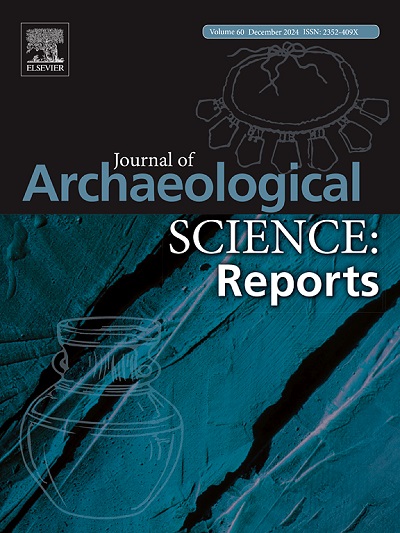Hunter-gatherer mobility patterns influence the reconstruction of social networks from archaeological assemblages
IF 1.5
2区 历史学
0 ARCHAEOLOGY
引用次数: 0
Abstract
Hunter-gatherer mobility patterns are extremely variable across the world and through time, in ways that have been shown to profoundly affect, among other things, cultural dynamics throughout our species’ evolutionary history. Unlike studies of contemporary hunter-gatherers, where culture and social interactions can be sampled separately, the archaeological record is the product of a social system in the past which we cannot directly observe. Yet, methods derived from the analyses of social networks have been increasingly used to make inferences about patterns of past social interactions using archaeological material as a proxy. It remains a question whether networks built from material cultural remains are indeed representative of the social processes that created them. Here, we use the ArchMatNet agent-based model to investigate how variability in hunter-gatherer mobility patterns and social organization affect our ability to reconstruct prehistoric social networks from artefact stylistic similarities. We find that variability in daily mobility, seasonal aggregations and patterns of migration have profound effects on our ability to recover social networks from archaeological assemblages. Moreover, that several metrics commonly used in SNA should not be interpreted in the same manner when applied to networks built from archaeological datasets. Our results highlight the fact that the archaeological record is the product of social interactions rather than analogous to them. Moreover, it points at a need to better understand the role of mobility in shaping human evolutionary patterns.
狩猎采集者的流动模式影响考古组合社会网络的重建
狩猎采集者的流动模式在世界各地和各个时期都存在极大的差异,这种差异已经被证明会对我们整个物种进化史中的文化动态等产生深远的影响。对当代狩猎采集者的研究可以对文化和社会互动进行单独取样,而考古记录则不同,它是我们无法直接观察的过去社会体系的产物。然而,越来越多的人利用社会网络分析方法,以考古材料为代表,推断过去的社会互动模式。根据物质文化遗存建立的网络是否确实代表了创造这些网络的社会进程,这仍然是一个问题。在这里,我们使用基于代理的 ArchMatNet 模型来研究狩猎采集者流动模式和社会组织的变化如何影响我们从文物风格相似性来重建史前社会网络的能力。我们发现,日常流动性、季节性聚集和迁移模式的变化对我们从考古组合中复原社会网络的能力有着深远的影响。此外,国民账户体系(SNA)中常用的几个指标在应用于考古数据集构建的网络时,不应该以同样的方式进行解释。我们的研究结果突出表明,考古记录是社会互动的产物,而不是社会互动的类比。此外,我们还需要更好地理解流动性在塑造人类进化模式中的作用。
本文章由计算机程序翻译,如有差异,请以英文原文为准。
求助全文
约1分钟内获得全文
求助全文
来源期刊

Journal of Archaeological Science-Reports
ARCHAEOLOGY-
CiteScore
3.10
自引率
12.50%
发文量
405
期刊介绍:
Journal of Archaeological Science: Reports is aimed at archaeologists and scientists engaged with the application of scientific techniques and methodologies to all areas of archaeology. The journal focuses on the results of the application of scientific methods to archaeological problems and debates. It will provide a forum for reviews and scientific debate of issues in scientific archaeology and their impact in the wider subject. Journal of Archaeological Science: Reports will publish papers of excellent archaeological science, with regional or wider interest. This will include case studies, reviews and short papers where an established scientific technique sheds light on archaeological questions and debates.
 求助内容:
求助内容: 应助结果提醒方式:
应助结果提醒方式:


